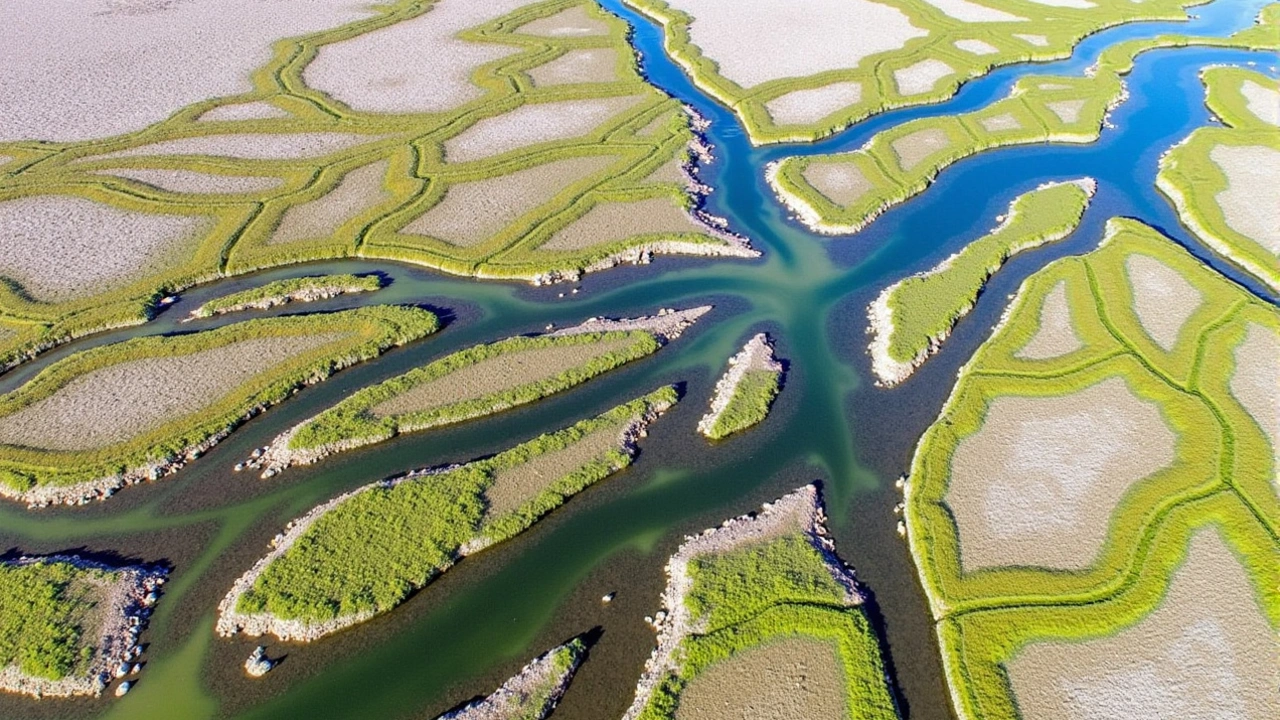The Impact of Dams on the Murrumbidgee River
In the realms of Australia's sprawling landscapes and dynamic ecosystems, the Murrumbidgee River holds a pivotal role. Stretching vastly across regions and integrating with the profound histories of countless communities, this river is now at the forefront of environmental concern. Recent studies bring to light stark realities regarding how human interventions, primarily dams and reservoirs, have altered its course—literally and ecologically. Over the last three decades, the encroachment of infrastructures designed to harness water resources has cut the river's flow to half its natural capacity. Such a change does not merely represent a quantifiable decrease in water volume but signifies profound repercussions on diverse life forms relying on these waters for survival.
Understanding the Historical and Present Flow Dynamics
The research, rooted in extensive computer modeling, provides a comparative analysis of the river's natural flow before major human interference, dating back to 1890. By examining the river's conditions from 1890 to 1927, a clearer picture emerges of how significantly human interventions have modified water dynamics. The construction of large dams and increased extraction for irrigation shifted the balance, with regulatory measures now controlling waters that once flowed freely, nourishing expansive ecosystems and communities. This regulation, while meeting modern water needs, disrupts the natural lifeline across the Lowbidgee Floodplain.
Ecological Repercussions and the Threat to Biodiversity
The ecological implications of this situation are dire. The intricate web of life that thrives within the Lowbidgee Floodplain relies on periodic floods, which ensure the nourishment and rejuvenation of both plant and animal species. Extensive river red gum forests, black box stretches, and dynamic lignum shrublands stand at risk. These environments are not mere patches of greenery but vital breeding grounds for countless species, including the emblematic Australian pelican and endangered forms like the Southern bell frog and Murray cod. Unfortunately, with regulated flows, periods between these life-sustaining floods grow alarmingly longer, threatening the very existence of such rich biodiversity.
Climate Change: An Amplifier of the Crisis
Looking towards the future, the looming shadow of climate change casts a deeper worry over the Murrumbidgee River. If trends continue at the current pace, impacts of global warming could take an even more significant toll. Projections indicate a potential reduction in river flows by a further 7-10% by 2075. The hotter, drier conditions expected to unfold in coming decades will work in tandem with human-imposed alterations, spelling a compounded crisis for water levels and the ecosystems dependent upon them. The annual duration of crucial flood events, vital for sustaining the floodplain's wetlands, risks plummeting by up to 85% compared to their natural benchmark — a scenario that stands as a dire clarion call for change.
Urgency of Action and Potential Mitigation Strategies
Despite these alarming findings, the path forward is not without avenues for mitigation and reform. The study underscores the pressing need to reconsider water management strategies and adopt measures that accommodate both present demands and the ecological integrity of river systems. Researchers point out that a balanced approach to river regulation—one that takes into account the historic and future context of river flow dynamics—could help avert the most severe outcomes. By integrating new technologies, more refined models of water allocation, and genuine conservation efforts, it is possible to carve a future where human requirements and nature's needs coexist. Stakeholders are invited to come to the table, deliberate on workable strategies, and uphold a commitment to preserving this irreplaceable natural heritage.
Conclusion: Preserving Our Natural Heritage
The Murrumbidgee River, like many of the world's natural marvels, demands our attention and respect. As the need for water resources continues to grow in tandem with human populations and climatic shifts, the need for sustainable solutions has never been clearer. Dams and alterations to river systems fulfill immediate needs, yet the long-term health of ecosystems must be preserved. The study injects urgency into the dialogue, challenging policymakers, scientists, and communities to devise innovative solutions that not only respond to human interests but also preserve the rich biodiversity that depends so heavily on the natural rhythms of flowing waters. In safeguarding the Murrumbidgee, a broader message resonates: our rivers, and indeed the planet's ecosystems, require careful stewardship and an unwavering commitment to sustainability.


Author
Ra'eesa Moosa
I am a journalist with a keen interest in covering the intricate details of daily events across Africa. My work focuses on delivering accurate and insightful news reports. Each day, I strive to bring light to the stories that shape our continent's narrative. My passion for digging deeper into issues helps in crafting stories that not only inform but also provoke thought.